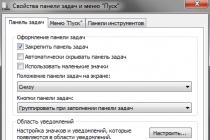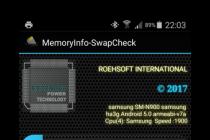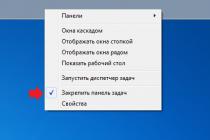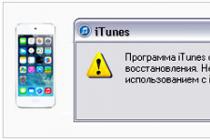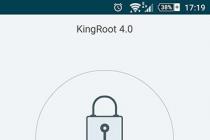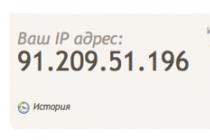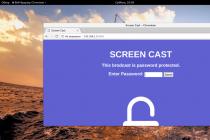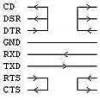4 Solutions collect form web for “Can you legally sell modified versions of Linux distributions?”
Would it be perfectly legal for them to sell copies of this slightly modified version of Ubuntu (let's call it Mubuntu = Modified Ubuntu)?
No. While software licenses may allow you to do this, a trademark license does not:
Any redistribution of modified versions of Ubuntu must be approved, certified, or provided by Canonical if you intend to associate it with trademarks. Otherwise, you must remove and replace the Trademarks, and you will need to recompile the source code to create your own binaries. This does not affect your rights under any open source license applicable to any of the Ubuntu components. If you need to approve, certify, or submit modified versions for redistribution, you will need a license agreement from Canonical, which you can pay for. For more information, please contact us (as indicated below).
You will need Canonical's permission to use: (i) any mark ending with the letters UBUNTU or BUNTU that is reasonably similar to trademarks or any similar similar brand, and (ii) any trademark in a domain name or URL or for merchandising purposes ,
You will be allowed to sell an unmodified version of Ubuntu, you will be allowed to sell a heavily modified version of Ubuntu that no longer mentions the Ubuntu name, but for this slightly modified version of Ubuntu you need an agreement with Canonical.
Yes, provided you comply with the license terms for all packaged software (submit source code, etc.) and do not violate any trademarks, copyright laws, etc. Also, you must ensure that your actions will not cause any harm to third parties like murder, etc.
Included closed source software must not violate the licenses of any libraries it uses (some licenses allow a binary dependency on closed source software and some do not).
As Serge said, yes. However, you cannot change the parts that are GPL (GPL window manager) and then close the source. You can't even use GPL libraries in closed source. So actually the answer should be: " NO", as if you closed the source with most of the system or desktop, by the time you are free and free from the GPL, it will no longer be relevant to Ubuntu. Also, I believe you require explicit permission from Canonical to use a word like Mubuntu. The question is really difficult. You need to do a lot of research and possibly hire a lawyer if you do this.
UPDATE
I thought I'd update the question because the comments are very long on whether you can use the GPL libraries in closed source. LGPL allows it *, GPL does not **. From the topic authority gnu.org/licenses/why-not-lgpl.html:
… the use of the Minor GPL allows the library to be used in proprietary programs; using the normal GPL for a library makes it only available to free software.
However, since most libraries are LGPL these days, the OP might not be as hard as I originally thought.
* There are still certain conditions that must be met in order to use the LGPL libraries.
** There are certain cases where you can use a closed source GPL library, for example if the software is not public and if the use of the library is not considered a modification or derivative work (for example, prelinking).
Suppose someone has downloaded a Linux distribution such as Ubuntu. Suppose it changes one part, let's say Window Manager.
No, you can't, because there are some projects protected by Canonical, but if you need to contribute, you need to sign the Canonical agreement:
Next projects covered by the Canonical agreement. If you would like to contribute to any of the projects below, please contact the project contacts listed in the third column.
To contribute, you need to sign the Canonical agreement.
Would it be perfectly legal for them to sell copies of this slightly modified version of Ubuntu (let's call it Mubuntu = Modified Ubuntu)?
What if they made the original section of the new window closed? Will it still be legal to sell?
You cannot do this without permission from Canonical:
Limited use requiring trademark license
Permission from us must be used by any of the Trademarks under any circumstances other than those specifically permitted above. These include:
Any commercial use
Use on or in relation to software product, which includes or builds on top of a product that we supply, if there is any commercial intent associated with that product.
- Use in a domain name or URL.
- Use for merchandising, such as on T-shirts and the like.
- Use of a name that includes the letters BUNTU in reference to computer hardware or software.
- Services relating to any of the above.
Choosing a LINUX distribution
Fedora Core
It is the most widely used Linux distribution for many years. Until recently, it was known as Red Hat. However, now the developer (the company of the same name) has retained this name for commercial implementations of its system. Its free implementation, intended for end users, is called Fedora Core.
Disadvantages:
- No support for NTFS (relevant for a person who is migrating from Windows and who has WindowsXP on his machine in parallel with Linux);
- No MP3 support;
- No Java
- Localization is UTF8 only, which in most cases results in squares and question marks instead of normal Cyrillic. Yes, all this is corrected, but not completely. If the Russian language is critical, you need to change the locale to KOI8-R;
- Implicit documentation. If there are no tensions with technical English - everything is OK! Yes - there will be problems - all translated documentation only through i-no, http://www.google.com. Searches take a lot of time and traffic.
Advantages:
- To update the system and install programs, there is an officially screwed APT-GET and a "muzzle" to it - SYNAPTIC. It is also very convenient for updates, since any kind of service information about them is not pulled along with the packages.
- The distribution is constantly evolving and from release to release it becomes easier and more convenient for the average user.
- The presence of a huge number of rpm packages already built (see below). Moreover, often such packages are collected by the software developers themselves and posted on official websites.
- There is a representative office in Russia. True, technical support is only for server (that is, commercial) versions of the distribution.
- A serious team is engaged in the development of the distribution kit.
- The vast majority of "thick" Linux books describe the Red Hat distribution from which Fedora Core spun off.
ASPLinux
This is a domestically produced distribution developed by the company of the same name. It is a clone of Fedora Core (formerly Red Hat), slightly modified in terms of application software and adapted for our conditions.
It is distributed in several versions (not counting purely server versions): Deluxe with many disks and with a complete set of documentation, Standard - half as many disks, only the installation manual from the documentation, Express - a three-disc set with a short booklet.
Disadvantages:
- Developers are extraordinary fans of patching the kernel. On average - 25-28 patches. As a result, the kernel is patched in such a way that even "daddy" from http://www.kernel.org does not recognize it! As a result - if you want to compile some program from source code - it's a game of roulette: it may or may not be assembled because of these patches, as you're lucky. As well as installing the kernel from http://www.kernel.org , you run the risk of getting a lot of big and small problems with the operation of things like iptables, squid, etc.
- For updates, yum is used, which "drags" service information about packages from the server, which often have a volume comparable to themselves. That is, information about the package downloaded from the server can be 1.2 MB in size, and the package itself can be 1.3 MB. In the presence of anlim and a wide channel - the question disappears, in the presence of a modem or expensive traffic - it is very, very unpleasant.
- Since ASPLinux is based on the same Fedora Core, package updates are often delayed, and can be close in size to the distribution itself.
Advantages:
- There is support for NTFS, MP3, Java, even Macromedia Flash is available.
- Fairly good localization (although, I should note that in the latest versions of the distribution, the user was also deprived of the ability to choose between koi8-r, cp1251, and UTF8, leaving only the last two).
- The deluxe version has excellent and explicit documentation. And by installing the distribution kit, and by markup hard drive, and by post-installation settings. It is written in an accessible and understandable way even for a person who heard about Linux somewhere and from someone. I can say that none of the Linux's has clearer and clearer printed documentation in Russian.
- There is a powerful technical support of the distribution kit directly by the developers. Answers come in 4-5 hours. That is, in the morning I sent a letter with a question - in the evening you have a 100% answer. As a rule, a certain technical support employee is assigned to you, to whom you fool your head with your stupid and sensible questions. Previously, there was technical support by phone, it was removed from version 9.0 and now only mail.
- There is a Russian-language website and a technical support forum, where, and quite often, answers are given directly by the developers.
- Most of the information that can be gleaned from the "thick" Red Hat books applies to ASPLinux as well.
Eyewitness impressions:
ASPLinux 9.0 has been used on a home computer, a work computer, and two friends for over a year. Plus:
very good DIY constructor;
quite decent assembly of packages, Russification, documentation;
man pages in Russian in most cases, some in the translation of your disobedient servant;
everything bad that is usually rightly said about the rpm package management system has been successfully eliminated by the developers;
there were very few problems with addictions even in conditions of severe mockery of the system;
stability and security in high level;
no inexplicable glitches were noticed, nothing distracted from the work itself;
repeatedly had to install ASPLinux 9.0 (only tsssss!!!) on top-secret equipment, on which, according to the general idea, the WSWS OS should have been installed;
bugs and rakes - none;
absolutely specific equipment simply could not be supported, but under an additional agreement, the drivers were written by specialists from the same ASP;
it is worth noting the correct technical support is enough high class- an argument that in those days favorably distinguished ASP from any competitors;
In minus:
the release of the ASPLinux 9.2 distribution kit, and then ASPLinux 10, coupled with a change in the company's management, crossed out many of the past merits of this respected team;
it cannot be said that they are unambiguously bad in all respects, but in comparison with ASPLinux distributions of versions 7.1, 7.3 and 9.0 they lose on all the points that I described above as advantages;
now the packages in the distribution are at least unconfigured.
As recently as today, I discussed with a novice user a problem that arose in ASPLinux 9.2 - there was no sound. Kernel 2.4.22, oss, default graphical environment - Gnome (according to Red Hat precepts). and at the same time, in the xmms settings, the output extension used was the default ... attention! arts, and optionally - alsa; the problem is not difficult for any experienced user, but the beginner sees only that there is no sound.
Developers positioning their product as a desktop distribution shouldn't make such stupid mistakes.
Has three user editions: multi-disk Altlinux Master, lightweight Altlinux Junior and single-disk ALT Linux compact.
Advantages(best ones first):
- apt-rpm as a package management system. With Synaptic GUI.
- Excellent Russification "out of the box" (encoding koi8-r, cp1251).
- A large amount of documentation in Russian in the distribution.
- Normal work with multimedia (availability of codecs for listening to mp3, watching video and DVD movies, commercial 3D video card drivers).
- Large Russian-speaking community of users and developers.
- Big package base. A clear hierarchy of repositories of varying degrees of stability.
- The openness of the repository in both directions, if desired, anyone can become a maintainer of something. See also backports.
disadvantages(in the beginning - the worst):
- ALM 2.4 still comes with the old Mandrake installer, which causes problems. Own installer - in the stage of public beta testing.
- At the moment, there is no global graphical configurator (for those who are especially interested, it is suggested to use the old drakex configurators "at your own peril and risk").
- The fact that the installer does not support USB keyboards and mice is one of the most annoying negative features of M2.4 (this only applies to installation, there are no problems using it).
- Kernel 2.6 cannot be selected during installation. The distribution has it, the whole infrastructure for using the 2.6 kernel is there, but this is not recommended.
- Installing in Expert mode can lead to various somewhat unexpected results. Therefore, it should be used with caution.
- There is an opinion that native kernels do not work optimally with the disk system.
Peculiarities:
- Supported locales: English, Russian, Ukrainian, Belarusian, Kazakh. In different encodings, the default Russian locale is koi8-r.
- Distribution developers try to take as much as possible possible measures security, which is good. But because of this, some things (root access, mounting, etc.) may not work as expected. In general, the security system is one of the most specific features of this distribution.
- Lack of own forum. Which is replaced by mailing lists. This is the principle position of the developers.
- Own system for building kernels in rpm packages. A large number of modules for the kernels come in separate packages.
- Many administrative tasks are performed through the control utility.
Developed by the German company of the same name, this distribution is now owned by Novell. It has a free Download-edition and several "boxed" options. The status of the latter is different, exhaustive information on this issue can be obtained from the following discussion.
Disadvantages:
- Russification not completed - half of the menus are in English, and half are in crookedly translated Russian.
- Official technical support in Russian for individual users is still difficult.
Advantage and disadvantage at the same time:
- The default locale is UTF8 with all the consequences that follow. In particular, working with Cyrillic documents in the console is difficult.
- YAST is a graphical utility for managing anything and everything. Some people like it, some people hate it. It is not advisable to configure the system using configs - everything is only through YAST. Manual editing of configs could previously lead to a complete crash of the system.
Advantages:
- Just a chic set of drivers, including proprietary ones, that are included in the distribution. The focus of developers on laptops has an effect - almost 100% guarantee of installation and operation of SuSe with any laptops, including WiFi, Winmodem, video cards, etc.
- Convenient utility for updating the distribution.
- A fairly large selection of software - almost everything you need to normal operation and rest - available.
- A very good set of ttf fonts, including Cyrillic fonts that make it optional to use fonts from Microsoft.
- The distribution kit is assembled reliably and soundly, with purely German punctuality and quality.
All distributions listed above are based on *.rpm packages. We will not discuss the advantages and disadvantages of the batch system here. However, whatever the latter, two advantages of the rpm format are indisputable. The first is that it is the most common (after source) free software format. And the second - both the format itself and the utilities for working with it are described in detail in many "thick" books on Linux (Red Hat).
Unlike all distributions described earlier, backed by commercial firms, more or less large, Debian is the result of the work of a free community of developers (project website - http://www.debian.org). It is distributed in various forms (as iso images, file sets, etc.), available both for free download and for replication and distribution.
Peculiarities
1. Unlike other common distributions (at least I don't know any analogues), Debian has three main branches: stable, testing and unstable.
- stable is an officially released (officially supported) distribution containing not very fresh, but very carefully tested and verified versions of programs; after the release of the next version of stable, this version, strictly speaking, is not updated at all, and all outgoing updates to stable are exclusively secure-updates that cover security problems found in the programs included in it after its release; due to these two factors, Debian stable is deservedly considered the most reliable distribution, which is achieved at the price of the mentioned backlog in versions;
- testing -- a branch that is about to become the next release; does not provide the maximum level of security that stable gives (nevertheless, the level is quite sufficient for home use), but differs from it in more up-to-date software versions;
- unstable -- this branch contains the latest, if you want to always have the latest versions of everything you can, go here; unlike testing, unstable will never be released, instead, programs gradually "creep" from it to testing;
- in addition to these three branches, there is also an experimental branch, which is actually at the beta testing stage; if you want something so new, which is not even in unstable - you are welcome, at your own peril and risk.
The main convenience for the home user is that packages from several different branches can easily coexist in one system (with a footnote to dependencies, of course) at the same time; those. if you want to upgrade, say, one program to unstable, you can leave the rest of the system in the testing state.
It should be noted that the inclusion of specific software versions in other distributions included in the main branch into testing, unstable or even experimental is due not to less software stability compared to other distributions, but, on the contrary, to the greater strictness of the distribution kit authors to the mentioned stability.
2. Only free programs get into the main (main) composition of the distribution kit; if ideology is important to you in open source/free software, you will find full adherence to it here. All programs with the slightest license deviations either fall into the non-free section, or are generally available only in third-party sources; thus, you are left with a choice - to use only free software in the strictest sense of this term, or to add something that does not fall under this strict understanding.
3. Debian doesn't actually have any release schedule for new versions. The motto of its developers is "it will come out when it's ready." On the one hand, this sometimes leads (as recently, for example) to protracted expectations, on the other hand, it completely excludes the release of a somehow cobbled together distribution kit, just to be in time for the announced release date (which happens with almost any software that has a declared release date -- I speak as a developer).
disadvantages
Perhaps the main disadvantage of Debian for a beginner compared to the distributions described above is the almost complete absence of centralized graphical configuration utilities (except, of course, such distribution-non-specific things, such as the KDE control center). Instead, there is a text mode interface for configuring individual packages (and the installer itself is made in the same style of text menus). The reverse side of this approach is the ability to reconfigure any individual package at any time with the command
$ dpkg-reconfigure package-name
without the need to remember in which branch of the system-wide customizer its settings are located.
The second drawback is that as a result of a strict attitude to the status of the software included in the main part of the distribution kit, this main part does not include drivers, say, for sophisticated video cards and soft printers. But if you have access to the Internet, this problem is easily solved, because. video drivers are in the non-free section of the distribution itself, and besides, semi-commercial distributions based on Debian (and fully compatible with it in terms of package format) are very rich in drivers.
Advantages
- the first and most notable is apt (the package management metasystem); in connection with which there are no problems with installing programs and resolving their dependencies as a class;
- a huge repository of compiled, ready-to-use packages that contains almost everything created by the creative genius of the open source community; of all common distributions (at least packaged), Debian has the largest set of software;
- simple both in installation and configuration, and in operation - everything is logical, understandable, transparent and fairly unified; this is probably why there are a lot of both “scientific” people and techies of non-computer specialties among Debian users - the time spent on setting up and “tuning” the system is incomparably small compared to the time actually working in it;
- a very moderate amount of the basic installation - less than 200 megabytes without X - as well as the ability to install the "basic" system immediately start working in it, installing the rest only as needed, allow you to tightly control the space occupied on the disk, if desired, and not scatter unnecessary ( and sometimes such not-superfluous) giga-, and even mega-bytes;
- an extensive Russian-speaking community, from which you can get help both in the Russian-language Email-conference [email protected] [email protected], and on numerous sites scattered across the expanses of Runet.
An additional factor, which can also be attributed to the advantages, is that a considerable number of so-called. LiveCD (of which the most famous, but far from the only one is Knoppix), which allow you to get acquainted with the features of the distribution kit without installing it, and with a positive result, deploy a full-fledged Debian system.
All of the distributions listed above are usually unequivocally recommended for novice users. For the following systems, however, this is not so obvious. However, they are sufficiently well-known, and therefore we consider it necessary to give some information about them - in a more free form. So that everyone could decide for themselves whether they are suitable for him as a "test of the pen", or not.
Slackware
It is the oldest (living) Linux distribution, from the very beginning to this day associated with the name of its creator - Patrick Volkerding. For more than 10 years, nothing has changed much (except for package versions, of course). Namely:
- Installation/configuration environment very similar to FreeBSD's sysinstall,
- BSD-style initialization.
- This is a package distribution - tgz format, but they have no dependencies, the packages themselves are compiled into a binary form from official sources without any patching, however, like the kernel. That is it PURE Linux.
- You can also build your own packages - build scripts for building are posted on the project website along with the source codes, the scripts are very simple, by the way.
- The package database is maintained, but in principle it is not needed.
The lack of dependency control is both an advantage and a disadvantage. For example, I have about 150 packages in one folder, to install them all I need to run one command
$ installpkg ./*.tgz
Note, without any keys. But the fact that then something from the installed may not start is up to you to figure it out yourself.
However, there are also mechanisms for automated installation / updating from the Internet - there are a huge number of them: slapt-get, swaret, getpkg, slackpkg and a few more.
Russification is now reduced to the launch of just one script, there are many such scripts on the Web.
More or less decent desired settings can be done through the pkgtool utility (it also serves to manage packages), many graphical front-ends have been released for it.
There is an incredible amount of documentation on the distribution, answers to all questions have long been found - you just need to look a little. Since essentially nothing changes in the distribution, it is practically not subject to the aging factor. By the way, the documentation itself comes with the distribution - in English, but not bad.
There is no technical support in principle - and in principle it is not needed. You just need to remember the site www.slackware.ru - there are docks and a forum, and www.linuxpackages.net - here you can find ready-made packages and links to iso images.
Unicode is not yet brilliantly supported, at some points you need to take a tambourine and shaman.
In general, children, that is, beginners, are scared with this distribution: you should not start with it - it is complicated. Nothing of the kind, it is as simple as the first Soviet ruble, but its simplicity is just as well hidden.
Gentoo Linux is a distribution that is becoming more and more popular in the OpenSource community, both for its support for a large number of hardware platforms and for its exceptionally flexible and user-friendly "portage" system, which is based on FreeBSD's PORTS.
Gentoo is a typical representative of the family of source-based distributions, which is the result of most of both its advantages and disadvantages. Whether this distribution is suitable for a novice user is a moot point. However, recently it has become widely known, and we felt it necessary to provide information so that this very novice user could answer it himself.
Advantages:
- High performance. The possibility of extremely deep and flexible optimization of the system for hardware.
- Convenient "add/remove programs". A large number of applications in the portage system.
- Convenient update mechanism. Live update portage tree. No extra custom software.
- The system contains applications with the necessary options (for example, gpm support or its absence, etc.) and the necessary patches.
- The ability to install Gentoo from any Linux system (eg Knoppix LiveCD or any other live distribution that contains the gcc compiler) without interrupting your current activities. In this case, Gentoo disks are not required: the entire installation process can be done from the web.
Peculiarities:
- No special installer.
- The need to read manuals and instructions.
- Limited number of "default settings".
- Build from source.
- Lack of graphical configurators for Gentoo specific utilities.
- Editing files and using console utilities is the preferred method of system configuration.
- The accuracy of developers leads to the fact that some quite stable versions of applications are listed as unstable.
Disadvantages:
- Very long and inconvenient installation (ready-made multimedia office system can be installed up to a week, depending on the equipment).
- The convenience of installing and updating programs is directly proportional to the regularity and cost of accessing the Internet.
- Solving assembly problems individual applications, if they (problems) appear, can be non-trivial.
- Lack of Russification "out of the box".
FreeBSD
Its difference from those described above is that it is not a Linux distribution, but a completely separate (albeit related) operating system. It is usually regarded as a purely server platform (according to various estimates, up to 40% of Runet servers operate under its control). However, its use as a desktop operating system for ordinary users no one is prohibited. Developed by FreeBSD by a community of independent developers, available for free download and replication from the project's servers.
Disadvantages:
- Not Linux, although similar! In some details it differs significantly, resulting in frequent misunderstandings with the mount command and advice to achieve an automatic start of X by changing runlevels.
- Installation requires an understanding of the BSD-specific nomenclature of devices, disk partitioning schemes in general, and BSD partitioning features in particular (understanding that Extended Partition is not an indispensable attribute of a disk, logical drives can be created in other ways).
- The installer, also known as the configurator, sysinstall is not quite logical, the same questions are repeated in the menu items Settings and configuration, you need to understand that disk partitioning at the installation stage is one thing, and at the configuration stage it is required when connecting, for example, additional disk. An archaic installer interface, less rich in automation features than the graphical installers of userophile Linuxes, and not as flexible as the generic Gentoo installer (bash + text editor).
- Supported hardware range at same as in Linux, there is no support for 3D graphics for cards other than Nvidia, as far as I know, not everything is going smoothly with "cool" sounds (more precisely, their advanced features), there is practically no chance to find a driver from the manufacturer for any non-standard or an exotic device.
- Set of packages on installation disks is limited, it is quite possible that the desired package will not be there. Installing additional packages (from binaries or ports) requires a fairly fast and, especially for working with ports, cheap channel.
- There is practically no FreeBSD-specific commercial software.
- There is no official technical support as a class. There is very little (compared with Linux) "paper" literature.
Advantages:
- Not Linux, but similar! From the point of view of a user (not an admin), there is practically no difference between Linux and FreeBSD. And many administrative functions (for example, account management) are implemented better.
- To install, it is enough to master the BSD-specific markup and the nomenclature of devices at the level of a couple of simple recipes. Not to mention the fact that mastering this specificity greatly contributes to broadening one's horizons :-))
- To understand the logic of the sysinstall device, it is enough to realize that FreeBSD consists of a base system that can be configured at the installation stage (and maybe at any time later), and additional software (packages and ports) that is not part of the system. It is also important to understand that X and almost all additional software are exactly the same as in Linux. When in doubt, you can always rely on sysinstall defaults - usually not ideal, but certainly reasonable.
- FreeBSD's hardware support, as long as it exists, tends to be better implemented than Linux. All devices critical to the installation and operation of the system are supported. Complications with disk controllers, ATA RAID and similar devices are practically excluded.
- The set of packages and ports for FreeBSD covers absolutely all free software, in principle, available in the form of source codes. It is possible to get packages or sources for ports on one machine (for example, in a freebie service) and install them on a completely different one - for example, at home.
- Thanks to the binary compatibility mode with Linux, it is possible to more or less easily launch all Linux-specific (including commercial) software - from RealPlayer and Flash to Oracle and similar monsters. There are practically no exceptions, the only question is labor costs.
- The lack of technical support is compensated by an abundance of online documentation, starting with the famous FreeBSD Handbook, almost all of it is available on distribution disks, and is available on the Web in Russian translations. Books, though few, but good :-).
- Unlike Linuxes, of which there are many, FreeBSD is one: all variations on this theme, from Freenzy to PC-BSD, are different ways distribution and bundling of the same OS. It is very important that everything read by a novice user about FreeBSD refers specifically to it, he does not need to guess, as happens with Linux, whether this description applies to the system in general or is specific to a particular distribution. Moreover, all knowledge about FreeBSD can be applied to any other BSD system (perhaps with only minor corrections).
And so that good finally triumphs -
In conclusion, the most important thing: no matter what distribution kit, and no matter what operating system you choose, this choice is unlikely to be the last and final in your life. You should be prepared for the fact that in search of the ideal, more than one or two options will be tried.
In the Linux world, we are used to seeing only clones. Debian, Ubuntu, Red Hat, SUSE - these are all different distributions, in which there is no fundamental difference. Half of the popular Linux distributions are forks of Debian or Ubuntu, others are forks of the ancient Slackware with a modified package manager and beautiful configurators. There is no trace of the former diversity, but maybe we are just looking badly?
Fork of the "Introduction" section from the last article
A modern Linuxoid cannot be understood, but in the past, choosing a distribution was a real epic. Distributions really differed in many ways, and due to the lack of high-speed Internet and virtual machines, these differences played a very important role. important role. Slackware offered end-to-end simplicity, Red Hat was detailed to the smallest detail and built-in configurators, Mandrake was equipped with a graphical installer, and Debian's mega-feature was APT, which allowed (you won't believe it!) Automatically download software from the Internet.
The greatest success was to get a four-disc set of Red Hat, which included all the graphical environments and a bunch of application software, but if that was not possible, Mandrake on two discs was quite suitable. In those days, only a few could download a disk image, so numerous discs with the most popular distributions went around. The distro building itself was relatively simple and imbued with the just for fun spirit that produced numerous Frankensteins, including my own, which died somewhere at the bottom of a 10-gigabyte Seagate drive.
Years passed, Seagate was killed by Kingston, and distributions turned into huge complex colossus, created to extort money from companies whose administrator suddenly persuaded the authorities to transfer servers to Linux. But somewhere among the numerous installations of Ubuntu and Linux Mint, those same Frankensteins continue to exist, who bring something new to the world of Linux, albeit in honor of another money-grabbing.
Slax and Modular Expansion System
At the time, Slax impressed me so much that I joined a group of developers who intended to create a distribution based on his ideas. The group, however, quickly ceased to exist due to the unrealizability of the idea, but Slax continues to exist and be healthy.
Slax is not just a distribution, it's a purebred LiveCD, which, among other things, can be extended with modules. This is done using an elegant mechanism, which, I'm sure, is used in a bunch of other projects, but for the first time for such purposes it was used here - the Unionfs file system. The essence of the method is as follows: not being able to change the distribution's file system on a CD in order to install additional software, the Slax developers came up with a method for connecting file system images to it over the root.
All additional software for Slax is distributed as modules with the sb extension. The module is an image of the Squashfs file system (a simple FS with compression), which contains the application and all the files it needs, located in the file system paths where they should be in the running system (usr/bin/abiword, for example). It is worth putting this module in a special directory on a USB flash drive (/slax/modules) or cutting it onto a disk, and the system will automatically pick it up and mount it on top of the LiveCD root on boot (Unionfs mounts FS on top of each other like layers of a pie). As a result, an application will appear in the system that is not physically there.
The beauty of this idea is not only in its suitability for the LiveCD extension, but also in the absolute simplicity of implementation. No package managers, no version conflicts, no app leftovers in file system, absolute protection against FS failures, the ability to roll back to a clean version of the OS. In general, the list can be long. But the main thing is that all this is obtained using a very simple mechanism that can be implemented in a few lines in the command interpreter language.
There's just one problem: building a complete distribution from hundreds of overlay filesystems will cost both performance and stability.
GoboLinux and separate application directories
Another uncommon on Linux (but standard on OS X and Windows) approach to installing third-party software is the GoboLinux distribution. Instead of /bin, /usr/bin, /usr/share and other directories familiar to any Unixoid, containing installed applications in a "smeared" form over the system, GoboLinux uses a set of directories /Programs, /Users, /System, /Files, /Mount and /depot.
In fact, the distribution follows the path of OS X. All system files are in the /System directory, and user-installed applications are in /Programs, each in its own separate directory (for example, /Programs/Firefox). As a result, it becomes possible to install different versions of one application (as an option - libraries), and to remove the software, it is enough to physically erase the directory.
However, there is a flaw in this directory organization that forced the GoboLinux developers to use several crutches. The problem is that, unlike applications for OS X, software for UNIX is written in accordance with the FHS standard, which assumes that the system has a standard directory tree that includes the very /bin, /etc, /lib, /usr and etc. Applications expect to see this structure on disk and may behave unpredictably if it is violated.
To solve this problem, the GoboLinux developers used two hacks: a special kernel module and symbolic links. The module hides all standard directories (/bin, /etc, etc.) when listing the root directory, but leaves it possible to access them directly. This makes it possible to hide the real directory structure from the user.
Links, in turn, solve the compatibility problem. All system libraries and applications stored in /System are symlinked in the /bin and /lib directories to allow the system to function properly. Compatibility third party applications provides an installer that creates new links for each installed application. So, when installing Firefox, the /usr/bin/firefox file will appear, which actually links to /Programs/Firefox/bin/firefox, as well as a number of other links.
Yes, this is a typical representative of the Frankenstein family, but it has its fans, especially among those who find the standard organization of the UNIX file system outdated and inefficient. And this, let's not argue, is true.

NixOS, its configurator and package manager
Speaking of package managers and the organization of the file system, one cannot fail to mention NixOS, perhaps the most interesting and “correct” distribution in terms of the technologies used. NixOS is built around two main ideas: a declarative system configuration model and a modern package manager, devoid of almost all the problems familiar to dpkg, rpm and the like.
Both of these technologies are closely related and, working together, realize a very interesting principle organization of the distribution, which allows you to describe any of its states (including all configuration files and a set of installed packages) using one central config. For example, I will give the following simple config /etc/nixos/configuration.nix:
# Loader location boot.loader.grub.device = "/dev/sda"; # The root partition of the system fileSystems."/".device = "/dev/sda1"; # Enable SSH by default services.sshd.enable = true; # Enable Apache (+ settings) services.httpd.enable = true; services.httpd.adminAddr=" [email protected]"; services.httpd.documentRoot = "/webroot";
This file describes the standard settings for a simple web server with SSH access. Yes, NixOS really allows you to keep the settings of different services in one file, but the point is not in this, but in the fact that, having this config, it is easy to clone the entire distribution. It is enough to copy this file to a freshly installed NixOS instance and run the command
$ nixos-rebuild switch
And voila. In a few minutes, we will have a distribution with SSH and Apache preconfigured and running. But the most interesting thing is that this command does not just install, configure and run the software, but actually brings the distribution kit to the described state. This means that after executing the command, only SSH and the pre-configured Apache will really remain in the system and nothing but their dependencies and configs (in fact, an analogue of installing from scratch).
This functionality can be used to quickly deploy a distribution, switch between states, quickly transfer the system between physical or virtual machines, expand clusters, and more. In addition, thanks to the package manager, NixOS guarantees the integrity of the system during updates and even allows you to roll back to a previous state.
This is possible because different versions (or builds) of the same package have different location paths in the system inside the /nix/store directory and are identified by the system by a hash, so updating is just an operation to download new versions of packages, deploy them along a unique path and "switching" the system to use them. No one forbids you to switch back at any time. Indirectly, this approach solves the DLL Hell problem, allows you to roll back applications to previous versions and, of course, install two versions of the same software next to each other.
NixOS is incredible interesting system, and I recommend anyone with a passion for Linux to give it a try. And we move on, next in line is QubesOS and its virtual environments.

QubesOS or Xen as the basis for the OS
At different times, many attempts have been made to create a secure operating system based on application isolation and virtualization technologies. At one time, even Microsoft did this as part of the Syngularity project, but none of these attempts were successful. No matter how good the ideas embedded in the OS were, in almost 100% of cases they became a “victim of the second system” - drag users and developers to new platform failed.
The QubesOS project, started by well-known Polish security expert Joanna Rutkowska, compares favorably with them in that it suggests using existing developments to build a secure OS, without having to break compatibility with applications, drivers and write millions of lines of code from scratch. QubesOS is just a Fedora-based Linux distribution, but unlike others, it is built from the ground up with the idea of hard isolation of applications and system components through virtualization.
The system is based on the Xen hypervisor, on top of which several virtual machines (domains) are launched, each of which is responsible for performing its own system function. In separate domains, the network stack (including a set of drivers), file systems and RAID drivers, as well as a graphics stack that includes an X server run here. Separate domains are also used to launch applications, but not one for each of them (otherwise the system would die from the rapid exhaustion of RAM), but divided into “interest groups”: entertainment, work, Internet banking, and so on.
The data transmission channel between domains is encrypted and has strict restrictions on the type of information transmitted and possible recipients. This means, for example, that if an attacker finds a hole in the Linux networking stack and can gain access to the network domain, then he will effectively be locked inside it, since all the network domain can do is process requests for network connections and transmission of data from authorized domains. This will not save you from sniffing and spoofing, but it will protect the data stored in the storage domain.
QubesOS uses KDE as its graphical environment, modified to hide the organization of the system from the user's eyes. Applications automatically run in different domains, and the environment uses color-coded window borders to indicate which domain an application is running in.
Currently, QubesOS developers are preparing to release the second release of the system (RC2 is already available), which will have a separate domain for Windows applications and a USB domain for safe work with USB devices.



Chrome OS
ChromeOS is one of the most atypical, weird and controversial Linux distributions. For most people, it's just a browser running almost bare metal, but for someone familiar with Linux, it's a complete operating system that has many of the standard features of regular distributions, interspersed with Google's own customizations.
By and large, ChromeOS is a heavily stripped-down Ubuntu, on top of which runs a graphical environment based on the achievements of the Chromium project. The same Ubuntu Upstart is responsible for loading the system, however, due to the need to launch a much smaller number of components, the cold start of ChromeOS is much faster (literally in a second). X.org is responsible for the graphics here, but it is used solely to properly support equipment and input devices, the image itself almost always bypasses the X protocol directly to the video adapter (therefore, X will soon be replaced by Wayland or Mir).
From other components also used graphics library Clutter, PAM, D-Bus, NTP, syslog and cron. There are no package ideas in the system, and all OS updates occur during the OTA update “in one piece”. During the update, the system is never overwritten, but instead uses the second system partition, which becomes the first after reboot. Thus, ChromeOS can always be rolled back to a previous state, and the update itself cannot kill the system.
Due to the absence of many standard components of Linux distributions and the focus on running browser-only applications, ChromeOS is highly resistant to hacks. As with a desktop browser, each web application (read: tab) runs in its own sandbox, preventing the entire system from being compromised if an attacker finds a hole in the browser itself. The system partition is always mounted read-only. Chromebooks use the TPM (Trusted Platform Module) to verify system integrity.
In general, ChromeOS is not a complete operating system, but rather a very non-standard Linux distribution, which cannot be said, for example, about Android or Firefox OS.
Debian GNU/kFreeBSD or "why not?"
The Debian distribution has always had broad support for a wide variety of computer architectures. It is capable of running on ARM, MIPS, PowerPC, Sparc, and a variety of other officially and unofficially supported machines and processors. However, one of the most interesting ports of Debian has been done... to the FreeBSD kernel.
At its core, Debian GNU/kFreeBSD is the same distribution but modified to run on the FreeBSD kernel. There is the usual apt-get, a set of configurators, a System V-style initialization system, binary package repositories, KDE and GNOME, so for end user the difference will be completely invisible. But the system administrator will find many interesting goodies for himself.
The main reason for the existence of this project is to be able to use FreeBSD technologies that are not available in the Linux kernel. These include native support for ZFS, a modular subsystem for working with data warehouses GEOM, a modular Netgraph network subsystem, and, of course, a reference implementation of the TCP / IP stack. All this is available in Debian GNU/kFreeBSD along with the usual Debian goodies.
- Damn Vulnerable Linux is the most vulnerable distribution in the world
- Stali is a distribution based on the idea of KISS from the famous project Suckless
Side stems: INFO
The model for installing applications in separate directories first appeared in the GNU Stow installer.
Interestingly, in addition to Debian GNU/kFreeBSD, there is also a port to the Hurd microkernel, but its condition leaves much to be desired.
Version Chrome browser for Windows 8 is nothing but ChromeOS in miniature.
GNU/Linux- multinational OS. And each country creates its own distributions, which are used both on workstations and on servers. Russia is not far behind, and there are several good (and not so good) Linux distributions, which I will talk about. At the same time, I will talk about the most famous and popular distributions that are well developed and actively used. Go!
Rosa Linux

Rosa Linux- a distribution based on the now deceased Mandriva, and continuing its development. This distribution has several editions designed for different applications. The free desktop edition is Fresh, which includes the most recent and stable software. Editions "Cobalt", "Nickel", "Chromium" created for government agencies, and certified by the Russian Ministry of Defense and FSTEC. These distributions are not freely available. The server version was originally based on Red Hat Enterprise Linux (RHEL), was subsequently also transferred to the Mandriva base. Based on the Rosa project, the distribution kit is being developed OpenMandriva, which is "polygon" to test new software and technologies (like Fedora for RHEL).



The distribution uses its own developments:
- ABF (Automatic Build Farm)- a distributed environment for continuous development and assembly based on the Git version control system. ABF is designed as a structural façade for proprietary (distribution-dependent) technical processes. This approach allows, with a minimum entry threshold, without large-scale changes in package bases and build technologies, to add distributions based on various package bases to ABF. A single external logic supported by ABF provides the ability to quick exchange functionality between development teams from base and derivative distributions and between different base distributions, and also accelerates the appearance of new application functionality in distributions from external vendors. The OpenMandriva project borrowed the ABF build environment.
- ROSA Hardware DB- database of tested equipment;
- Rocket Bar- panel quick launch applications with the ability to switch between them;
- SimpleWelcome- a single point of launching applications grouped by functionality;
- time frame is a content visualization tool that allows you to track activity and find documents and files on specific dates.
- stackfolder- an applet that allows you to organize quick access to the most used directories and files (included in KDE 4.10 by default);
- Klook- a utility for quickly viewing a group of files (analogous to QuickLook in Mac OS X, in KDE 4.10 by default);
- ROMP- multimedia player based on MPlayer and SMPlayer;
- ROSA Software Center- application installation center;
- Upstream Tracker- tracking and analyzing the compatibility of changes in Linux libraries;
- Kernel ABI Tracker— analysis of changes in the Linux kernel.
Calculate Linux

Calculate Linux is a line of enterprise distributions based on the famous Gentoo(the one that is assembled from source codes during installation), but unlike it, they have a simple and understandable installer, high quality assembly and system utilities, as well as a very wide range of pre-installed software (in the Desktop edition there is even Skype). At the same time, Calculate is fully compatible with Gentoo, using its native system Portage for building and installing software, and also contains a large number of binary packages in the repository. Calculate has the following editions:
- Calculate Linux Desktop KDE/MATE/Xfce (CLD, CLDM, CLDX) is a modern desktop based on the KDE, MATE or Xfce graphical environment that can perform most office tasks. The main feature is fast installation, convenient update system and the ability to store user accounts on the server. Appearance desktop on all three distributions is identical. Employees can freely work on different desktops by sharing files, documents from Windows OS.
- Calculate Directory Server (CDS)- can act as a domain controller, allows using Calculate 2 utilities with simple unix-like commands to configure Samba, Mail, Jabber, Proxy services. As the calculate-server package, which is part of the Calculate 2 utilities (Apache 2 license), is released, new versions of the server are released at intervals of 2-3 months.
- Calculate Linux Scratch (CLS) is a base distribution, like stage3 in Gentoo, used to build other versions of the desktop. Unlike stage3, it contains the necessary minimum of additional packages, drivers, libraries, source code Linux kernels and portages.
- Calculate Scratch Server (CSS)- like CLS uses a minimal set of packages. Unlike the latter, it is designed to be installed on a server.
- Calculate Media Center (CMC)- a specialized distribution optimized for storing and playing multimedia content.
All distribution versions are distributed as a bootable livecd image that can be installed on HDD, USB-Flash or USB-HDD.


Peculiarities:
- Ready-made client-server solution.
- Rapid deployment in the enterprise.
- Full-fledged work in heterogeneous networks.
- Update model: rolling release.
- Includes specially designed Calculate utilities for configuring, building and installing the system.
- Interactive assembly of the system is supported - preparing an ISO image of the system for your tasks.
- Ease of administration.
- Can be installed on USB-Flash or USB-HDD with ext4, ext3, ext2, ReiserFS, Btrfs, XFS, jfs, nilfs2 or FAT32.
- 100% Gentoo compatible with support for binary update repositories.
runtu

runtu- this is a Russian assembly ubuntu, focused, oddly enough, on the Russian user. The system is fully Russified, very easy to install, has a good set of preinstalled apps. A distinctive feature of the distribution is a set of system utilities developed by a project participant FSnow. This software is available in the Launchpad repository ppa:fsnow/ppa .
There are two editions of Runtu:
- Runtu XFCE- with a lightweight Xfce graphical environment configured for a familiar Windows user interface;
- Runtu LITE- with the Openbox window manager, targeting old and weak hardware.
Russian Fedora Remix

Russian Fedora Remix(or RFRemix) is a build based on the Fedora distribution. In addition to full Russification, it has the following differences:
- The fonts look orders of magnitude better than in the original Fedora;
- By default, repositories with non-free drivers, proprietary software, etc. are connected;
- By default, multimedia codecs are installed that cannot be included in the original Fedora due to patent restrictions;
- Similarly, fixes and improvements are added that Fedora upstream does not accept.
Otherwise, it's a regular Fedora. Official site
ALT Linux

Initially based on Mandrake(which later became Mandriva), but gradually began to turn into an independent system. A distinctive feature of ALT Linux is its package manager: it uses packages of the format RPM, as in RedHat-derived distributions, but they are controlled using the utility APT (Advanced Packaging Tool), which is "native" for Debian and its derivatives (such as Ubuntu). ALT Linux is also famous for being sent to many schools, and computer science textbooks contain tasks specifically for it (except for Windows). The distribution kit has both publicly available free editions and versions for government agencies certified by the FSTEC and the Ministry of Defense of the Russian Federation. The Simply Linux distribution is a lightweight edition of ALT Linux, containing a large amount of educational and multimedia software, as well as a simple and convenient desktop based on Xfce. Development of packages for ALT Linux, conducted in a special repository Sysyphus. The following editions are available:
- Alt Linux Centaurus (ALT Linux Centaurus)— a multifunctional distribution kit for servers and workstations, primarily intended for use in corporate networks;
- Alt Linux KDesktop- universal multifunctional user system Alt Linux KDesktop (ALT Linux KDesktop) includes everything you need for office work, creating various types of graphics and animation, sound and video processing, application development tools, and education. During installation, the user will be able to complete his own distribution kit and form the necessary functionality;
- "Alt Linux School"- a set of distribution kits for educational institutions. The kit includes operating systems based on ALT Linux for building the infrastructure of an educational institution:
School Server
School teacher
School Junior
School MasterThe main feature of the kit is the integration of student and teacher workplaces. This feature allows not only to centrally manage the educational process, but also provides interaction between students and teachers in the form of chats and forums familiar to all. Messages can contain tasks, their solutions and comments. It is also possible to exchange files of any format, both between a teacher and a student, and between students;
- The above Simply Linux.
Astra Linux

A special-purpose operating system based on Debian GNU/Linux, created for the needs of Russian law enforcement agencies and special services. Ensures the degree of protection of processed information up to the level of state secrets "top secret" inclusive. Certified in the systems of certification of information security tools of the Ministry of Defense, FSTEC and the Federal Security Service of Russia. The released releases bear the names of the hero cities of Russia and the CIS countries.
The manufacturer is developing the basic version of Astra Linux - Common Edition (general purpose) and its modification Special Edition (special purpose):
- general purpose version "Eagle"(common edition) designed to "solve the problems of medium and small businesses."
- version of the "special purpose" - "Smolensk"(Special Edition) designed to create on its basis automated systems in a secure design, processing information with a degree of secrecy "top secret" inclusive
PupyRusLinux

This is a lightweight distro designed specifically for low-end hardware. The small size of the system (about 120 megabytes), allows it to fully boot into RAM for maximum performance. PuppyRus Linux is focused on x86 computers, optimized for maximum performance, and due to low hardware requirements, it can breathe a “second” life into outdated models.
PuppyRus inherited two original package systems from its predecessor Puppy Linux: .PET and .PUP. They are gzip-compressed files that contain directories containing files for installation. These directories have the same names and structure as standard directories in the UNIX file system.
Thus, the process of installing new packages is accompanied by unpacking the packages to the root directory. Package manager program PetGet monitors the installation process, registers the files that are copied from the package to the system, and records these changes in a separate file - the installation log. After unpacking, PetGet executes the installation script (script) also contained within the package.
When a package is uninstalled, PetGet removes all files derived from it, according to its installation log. After that, PetGet executes the post-installation script (script) that was previously included in the package. Official site
Agilia Linux

It is a Linux distribution based on the now undeveloped MOPS Linux(which in turn is based on Slackware). The main principles that the developers of the distribution adhere to are the ease of installation and development of the system, as well as the selection of the most stable programs.
Historically, AgiliaLinux is a direct descendant of the defunct MOPSLinux. At the time, MOPSLinux was generally based on the Slackware package base, gradually increasing its share of its own packages towards the end of its existence. AgiliaLinux has continued on this path and the package base is now independent. The package format is txz, and mpkg is used as the package manager. Official site
Many users have no doubts and download the most latest version. People think that in the updated version, the developers have eliminated all the bugs, added useful features, made the design more attractive, the interface is friendlier. But this is not always true. Only in 2016 they released several modifications and assemblies. Among them there are different systems: both good and bad. Therefore, you need to think about which Linux to choose. And only then, after evaluating all the pros and cons, install the distribution.
There is no universal system that will suit all users. Each person needs something different. The administrator cares about functionality, security and opportunities remote control. For beginners - friendly and simple interface. For a lover of innovation - interesting options that are not in previous versions.
In 2016, many distributions were released. Among them, you will definitely find the one that you need. But no rating will make a choice for you. It is better to independently evaluate the option you like.
There are a few general criteria that are important in any version of Linux:
- Stability. If the system constantly crashes, gives errors, crashes programs, no other advantages will push it to the top 2016. You will have to constantly look for the causes of failures and restore damaged data. It doesn't matter what tasks you use the modification for - its stability is always important.
- Security. Holes in the system are a godsend for any virus. Of course, Linux is a great example of reliability. But it depends on the Firewall, access log, protection settings. It is better to choose a distribution kit in which optimal settings and closed all "loopholes" for malicious software.
- Functionality. The presence of useful and interesting options. Or some kind of "zest" that was not added to other Linux systems. The main thing is not to overdo it. If the assembly has a huge number of functions you do not need, it is better to take something simpler. After all, they will overload the system.
- Convenience. The interface should be not only understandable, but also practical. To all important options were at hand. So that when you turn on your computer, you can get to work.
- Modernity. Legacy systems are good in many ways. They have stood the test of time. If you have used them before, after switching to the 2016 distribution, you will have to get used to it. And the new modifications may not live up to expectations. If it's been released recently, it's likely to have bugs. But still it is better to take modern Linux. Not necessarily the latest version. Developers make programs, focusing on new systems. May come out at some point useful application, which will be incompatible with your build. And will have to update.
- Design. Of course, the shell is not the main thing. After all, there may be nothing under it. But if the rest of the criteria suits you, why not look at the design of distributions. It can be changed. Therefore, you should not rank the most beautiful Linux of 2016. Just when choosing a modification, look at what design options it has.
- Support, community. This means not only the development team and the official technical support of Linux. The people who use the operating system are important. They chat on forums, discuss builds, make reviews. They can answer questions, suggest how to solve the problem. If you install an unpopular version of Linux, you will have to deal with it yourself. After all, there will not be so many users who work with it. And you are unlikely to find them. This criterion does not apply to highly specialized modifications.
When deciding which Linux distribution to choose, don't settle for the most common version. Review several options. What other people like may not suit you personally.
Run your favorite build on virtual machine or with LiveCD. No rating, review or opinion is a substitute for personal experience. Linux is unpredictable in this regard. You will be able to understand if the program is right for you only after you work with it for a while.
A build that is constantly being improved. New versions are released frequently. Ubuntu is still popular in 2016. Although it was released 10 years ago.

The system is suitable for beginners who decide to "try" Linux. It's easy to install. It has a convenient and beautiful interface. There is nothing superfluous in it.
You can work with Ubuntu without even using a terminal. It is not like "classic" Linux - you have to work with command line. This is both a plus and a minus. You will easily get used to the new environment. But if you decide to install another build, you won't be able to use it without instructions.
New features are often added to Ubuntu. And with them - new bugs. They are removed as soon as they are discovered.
- Distributed for free. Many programs and modifications are free to download.
- Quick installation - 10 minutes, and the distribution kit is already on the computer.
- Clear and friendly interface. It's easy to figure it out.
- No viruses. More precisely, viruses simply cannot infect the system. Nothing happens on Linux Ubuntu without the permission of the user. If you yourself don't "miss" malware, they won't make it into the build.
- Multiboot of operating systems is available. Ubuntu can be installed alongside Windows. You don't need to configure anything for this.
- The assembly comes with a set of software.
- No Linux distribution rating is complete without Ubuntu. This is a common build. If you have a problem, you can find a solution in the community or on the forum.
- Low stability. There are occasional crashes. But at correct setting the system will work normally. Despite this, Ubuntu and some of its modifications are the best builds of Linux. After all, failures in it are not so critical.
- You may have errors that no one has encountered. This is the fault of the newer versions.
- If you decide to try other Linux distributions, it will be difficult to rebuild after Ubuntu.
mint
Intuitive graphical interface. There is a module that will speed up the adaptation if you switched to Mint from a Win system. They have a similar taskbar, desktop, navigation. You will quickly get used to the new “environment”. There are several working environments. Just choose the one you feel comfortable working with.

Mint is based on Ubuntu. The creators of Mint decided to remove all the disadvantages that are inherent in Linux. The peculiarity of the assembly is that it has built-in multimedia codecs. And the programs that are needed for full-fledged work on the computer are already included.
Excellent feedback. The creators of the modification are interested in the opinion of users, listen to it.
- Mint is almost the most common assembly of 2016. There is a huge community. You can contact the developers directly with a suggestion or idea.
- It's free.
- There are a number useful features: plugins for easy installation of programs, downloading updates, launching programs.
- Convenient graphical interface. You can switch between working environments.
- Updates and upgrades come out frequently.
- There are no public security bulletins.
- The developer is not an official company, but enthusiasts. In many ways, this is an advantage, since the creator of the system will be closer to the users. But he can make mistakes, because he does not have a team of professionals.
One of the oldest representatives of Linux. But it is popular in 2016 due to its stability and security. He has a huge development team. But new versions are rarely released.

Debian is installed on servers. It is suitable for remote administration. In him best systems package management.
Assembly is not suitable for beginners. She has more programs and settings that you need to understand. But installing the build is easy.
- This is an example of stability.
- Support for many different architectures.
- Works quickly and efficiently.
- Provides security.
- There are a huge number of programs. About 43,000 packages.
- Debian is easy to upgrade.
- Suitable for servers and remote administration. There is a package management system.
- After installation, initial configuration is required.
- The settings themselves are hard to figure out.
- Distributor is outdated. Popular in 2016 only because it is the most stable and reliable build based on Linux.
- Rarely do updates come out.
- The amount of software is both an advantage and a disadvantage. It will be difficult for a beginner to understand such a variety of software.
Other builds
- Arch Linux. Simple and convenient build. If you want to understand Linux and learn how to work in it, Arch Linux is the best choice. But the distribution has one major drawback. After installation, you won't see anything. All functions must be searched and configured independently. And no automation. Before downloading this assembly, read the instructions for it.

- ChaletOS. If you are yesterday Windows user, Chalet OS is for you. This build is very similar to Win. But underneath the shell is Linux. You will be able to manage new system using a familiar graphical interface. The collection was released recently. It may still have flaws.

- elementary OS. A distribution kit with an amazing design. And these are all its advantages. Only those applications that do not violate the overall composition of the desktop were added to the modification. No new solutions or features. Elementary OS is just a beautiful operating system.

- cube linux. Suitable for laptops. The build is stable. It has a practical and uncluttered interface. Thanks to this, the battery lasts longer. You can run software designed for Ubuntu on Cub Linux. He doesn't need powerful computer. It is installed even on old laptops. But there is also a minus - the system boots slowly.

Highly specialized distributions
Here are the best Linux distributions 2016 designed for highly specialized tasks.
- Ubuntu Studio. Multimedia studio based on Ubuntu. A professional build designed for designers, sound engineers and those involved in video editing. The functionality of the system is aimed only at this - it is not intended for other tasks. Ubuntu Studio doesn't need a lot of resources. They can be distributed among programs.

- Tails. If you don't want to be followed, install Tails. It is based on Debian. The build provides security, privacy and complete anonymity on the network. Runs from LiveCD.

- Snappy Ubuntu Core. Innovation for innovation. Designed for "smart things". With it, you can control home automation tools (microwaves, coffee makers). The system does not need a lot of resources to work.

- SteamOS. A huge problem for Linux is that there are few games on it. Because of this, many users preferred Windows. And they were not going to completely abandon it. But Valve found a solution - they provided "Linux for games". operating system Steam OS based on Debian. It features the features of the Steam platform.

To decide which Linux to choose, you need to try a few builds you like. In reviews and tops, you can only look at the options. But if you know exactly what you need, install without hesitation.
Which Linux do you think is the best?

